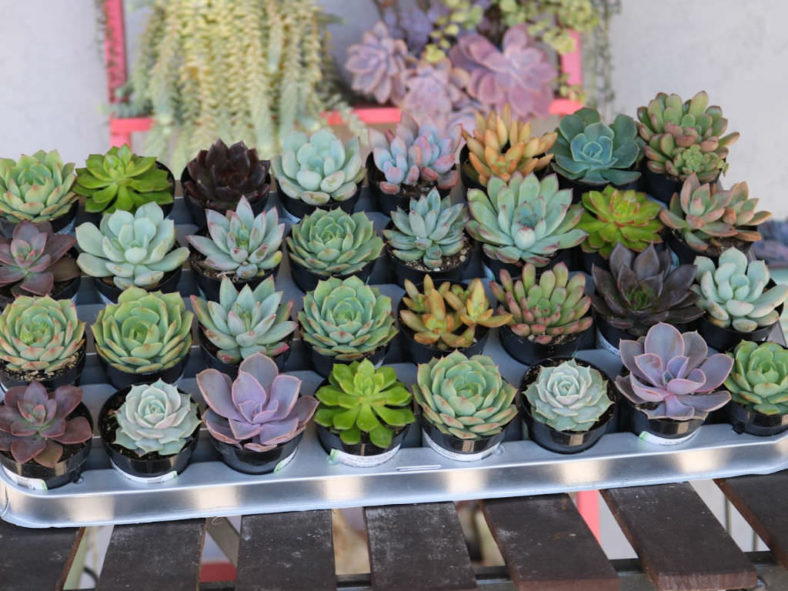When browsing gardening catalogs or the Internet, you may encounter the term "rosette." Although it sounds like it ought to be the name of a plant, it actually describes how a plant grows. If a plant grows in a rosette form, the leaves will radiate from the center stalk either right at ground level or close to the ground. The term rosette is used because the pattern resembles the habit of a rose's flower. Many types of plants grow in a rosette pattern.
Rosette Succulents
Most succulents that form rosettes maintain that form their entire lives. The rosette formation allows maximum sun exposure while allowing the plants to capture and direct moisture toward the roots. Most succulents come from arid areas, where thick leaves help them retain water. However, many succulents also grow in more temperate regions. In warmer areas, Aloes and Agaves, which grow in USDA Plant Hardiness Zones 8 and above, are good examples of plants with a rosette pattern. In more temperate regions, such as USDA Plant Hardiness Zones 3 to 11, you can enjoy the rosette patterns of Sempervivums.

Rosette Succulents Care
Most rosette-forming succulents need at least half a day to a full day of sunlight. When planting in the garden, ensure the area drains well and is not in a low spot that would stay wet. For container planting, you can purchase a potting mix prepared for these fleshy plants or create your own, as some succulent enthusiasts prefer. The container you are planting in should have a drainage hole. Allow the soil to dry slightly between waterings. Watering with a well-balanced fertilizer once a month will be enough.
Source: sfgate.com
Links
- Succupedia: Browse succulents by Scientific Name, Common Name, Genus, Family, USDA Hardiness Zone, Origin, or cacti by Genus